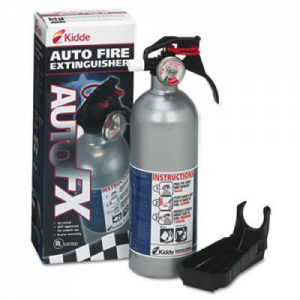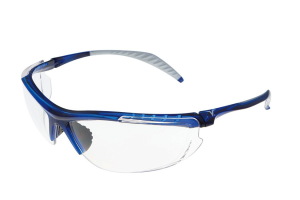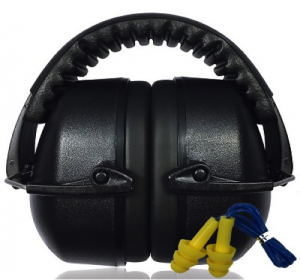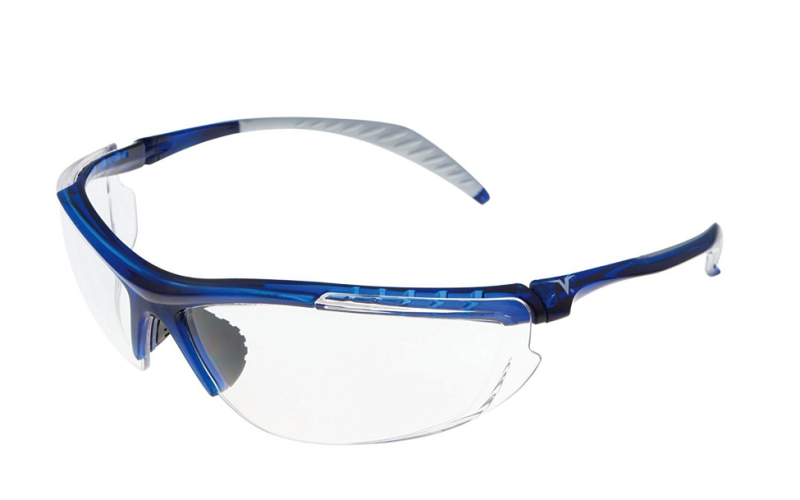6 Must Have Auto Repair Accessories
When we talk about the six must have auto repair accessories we’re not including rags. The list highlights items many DIY auto repair mechanics might not think of bringing to the job site. With that said, you must have rags on every auto repair job. And before we move on let’s just say that not all rags are created equal.
Some rags welcome fluids by eagerly soaking them up. These are usually made from a blend of different materials with a high percentage of cotton. Then we have the super low cost ones in the range of $20 for a pack of 100. These are the bright red wipers that seem to repel fluids until you wash them half a dozen times. And I wouldn’t put them in a home laundry machine as these cheap rags don’t hold the red dye very well.
If you do a serious amount of auto repairs at home, consider using a shop rag service. This is when a local commercial uniform company picks up your shop towels cleans them using an industrial process and delivers them back clean and ready for use. These services are often flexible and therefore cost-effective.
The Fire Extinguisher an Auto Repair Necessity

In a professional retail auto repair center you’ll find fire extinguishers in easy to access locations throughout the shop. Although it’s not a common event to have an automobile catch fire, it certainly is a possibility. Using my own personal experience as an example, in my 30 year career, I have been involved with four major car fires.
Using the first flame up as an example, I was working on my 1973 Dodge Charger. I had just replaced the timing chain and gears and apparently I didn’t get it quite right. When I road tested the car with the hood off it backfired through the carburetor and it caught fire. This was a summer day and I was not wearing a shirt. I had absolutely nothing with me to put out the flames. I took off my shorts and used them to smother the carburetor fire.
Unless you want to walk around in your underwear, like I did that day, have a fire extinguisher within reach during your do-it-yourself auto repairs. Since all a car fire needs to get started is a fuel source, spark and air all three of these items are available in abundance while working on an automobile.
Government agencies require commercial vehicles to carry a fire extinguisher on board. And it’s not a bad idea for any car owner to carry one at all times. Since an automobile fire can include interior materials, gas, oil and electrical fires a sodium bicarbonate, dry-chemical suppression extinguisher is recommended. Commercial vehicles are required to carry one with a total weight of 5 pounds. However, a two pound extinguisher should be adequate for most automotive applications. With a total investment of around $25 this could be money well spent
A Variety of Work Gloves for Car Repair
It doesn’t take long for a new mechanic to realize that when the skin goes up against metal car parts the skin loses the battle. Twenty or 30 years ago mechanics didn’t wear much protection on their hands. As time went on we started to realize that the skin is good at absorbing the nasty chemicals that we use in everyday automotive repairs.
With these two overwhelming reasons to wear protective gloves I was one of the early adopters of using surgical type gloves for every day repairs like oil changes and tune ups. For heavier repairs or if my knuckles were in clear danger I would wear a thicker pair of work gloves. The surgical style gloves allow you to perform any operation that requires a tactile feel.
Starting a nut or bolt deep inside the engine compartment where feel is more important than eyesight provides a perfect example. Surprisingly, this thin layer of latex skin can also offer some protection against cuts, gashes and other common surface type skin injuries. It also eliminates absorption of harmful chemicals. The only drawback to wearing these is in the summer months.
When it’s 113 degrees outside these latex mechanics gloves can become like water balloons if you wear them long enough. The same goes for the heavier mechanic work gloves. Although I wear hand protection less often in the summertime I’m known for thinking through the repair and knowing when I should have these things on despite the minor discomfort.
Why we Wear Safety Glasses

When you walk under a car and you look up, you’re at risk for something falling into your eyes. Since going to the emergency room and getting something removed from your eye is such an awful experience those who endure it will seldom make the same mistake twice. Some of the most common items that cause these injuries fall into the rust and metal fragment category.
However, these are far from the only things you protect yourself from by wearing safety glasses. Not everybody fully understands what getting pressurized air conditioning refrigerant squirted into your eyes will do. Let me tell you it’s probably the worst case scenario of any automotive eye injury. Frostbite damage is instantaneous and irreversible. Battery acid runs a close second as a worst case scenario.
The owners of auto repair facilities realize the dangers of not wearing safety equipment. Employers are motivated to limit injuries as they can save on their commercial insurance policies and avoid legal troubles. It’s also good policy to look out for valued employees. Many franchise auto repair centers now require the wearing of safety glasses any time an employee is in the shop area.
Since the cost of safety glasses purchased in bulk supply can be in the 1 to $3 range these companies will also supply them. Auto repair manuals have also started to add sidebar graphics when technicians should put on recommended safety equipment while performing dangerous auto repair procedures.
Fender Covers to Protect the Car Finish
Since we talked about protecting the mechanic I think it’s time that we talked about protecting the cars that they’re working on. Let me start this one off with another quick story. My neighbor was working on his F150 pickup truck. Installation of a water pump was his project of the day. I noticed him wearing blue jeans with a metal belt buckle.
Every time he moved to the side and leaned over the fender he put scratches in his truck. I grabbed one of my fender covers and brought it over for him. He said trucks are meant to get scratched. Now every time he pulls in the driveway, I see the scratches. In fact, they’re down to the bare metal and have started to rust. I just don’t see the sense in harming the finish of any vehicle.
Fender covers are inexpensive. You can use an old towel if you don’t actually want to buy one. You can also go in the other direction and get a high quality fender cover with a grippy rubber coating on the underside. This prevents the fender cover from slipping off a tall fender like on the F150. There’s another advantage of using these molded type fender covers. It provides a convenient area to lay tools without having to worry about them rolling off the vehicle.
If you take your automobile into an auto repair shop and you see a technician leaning over the fender with no protection, you might want to request they use fender covers. Note that as a professional technician I had a specialized belt that hooked from the underside and would not scratch an automotive finish. Nevertheless, every scratch you put in your car’s finish detracts from its overall value so why not protect it.
Save your Hearing with Two Different Types of Ear Protection

After a 30 year long automotive repair career one of my most noticeable scars is my inability to hear. I’m not that old, but I certainly need to crank up the TV to the point where the rest of the family looks at me like, what’s wrong with you. If I’m watching a movie where somebody is whispering I have to turn on the subtitles, because there is no possible way for me to hear it.
The sad part about my personal issue is that it’s completely preventable. The damage to my hearing was long-term and caused by the common noises found in an automotive repair shop. Things like striking something with a hammer or using a half inch impact gun to remove lug nuts over and over day after day slowly damages your hearing.
Wearing a noise canceling device like a set of earmuffs commonly used at the gun range can save your ears for your older years. These devices are inexpensive at around $15 for a good set. The other alternative is to use noise canceling foam earplugs. These cost five dollars for a box of 20 sets or you can get 50 pairs for around nine dollars.
The difference between the foam earplugs and the noise canceling headsets is not as much as you might think. Many of the foam insert earplugs reduce the noise level by about 30 dB. The over the ear noise canceling headphones are good for about 35 dB. The important thing is to do what’s comfortable and convenient for you so that you actually wear the noise reducing devices. There’s no reason for you to spend your golden years with your hand up to your ear saying what.
Single Edge Razor Blade Scrapers and Alternatives
When you’re working on an automobile you’ll find yourself reaching for single edge razor blades in many situations. Whether it’s scraping gaskets or opening up a wiring harness so you can probe wiring, the razor blade is a powerful tool. It can also be extremely dangerous when you’re hands contain grease or oil.
A slip of the razor blade can cause a major injury. My advice is to move your hand as far away from the blade as possible by using a holding fixture for single edge razor blades. This is another low cost item that can provide a lot of protection during your do-it-yourself auto repairs.
You can also buy yourself an automotive scraper set that replaces the razor blade for many specific auto repairs. Although a razor blade is convenient it’s not always the right scraper for the job. With the increased use of plastic and aluminum automotive parts a razor blade can damage the sealing surface. A specialized scraper can remove old gasket material without such damage.
If you prefer to stick with a single edged razor blade scraper due to convenience make sure you wear heavy gloves. However, there’s another option that can prove useful throughout the automobile and for various services. A plastic razor blade provides a good amount of scraping power, without the ability to dig into the soft aluminum or plastic surfaces.
These single edge plastic razor blades have been a long time favorite of professional detailers as they use them to remove bumper stickers and unwanted items from glass surfaces like windshields and windows. Finally, there are two other tools you can use to remove the gaskets from delicate surfaces.
A high-speed right angle die grinder allows the technician to install a cleaning disc holder. Some of the most popular of these devices is offered through the 3M Company. The benefit of using these discs is the abrasive material is specifically designed for plastic and aluminum surfaces. This gives you a quick way to remove even the most stubborn gaskets without damaging expensive automotive parts.
Last, but not least there’s a chemical solution offered in a spray can. Both Loctite and Permatex offer gasket removal sprays for different types of surfaces and gaskets. These chemicals work on the adhesive holding them in place. Following the directions can make quick work of even the most problematic and troublesome stuck on paper gaskets.


